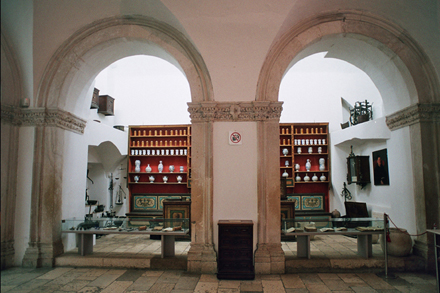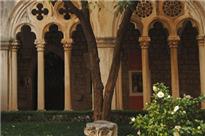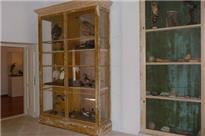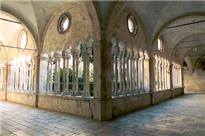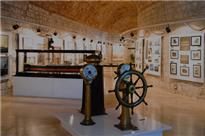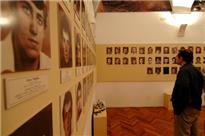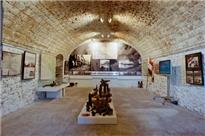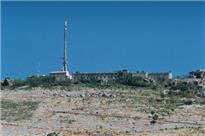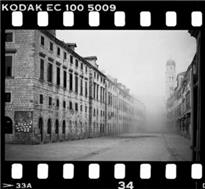Dubrovnik is both a museum city and a city with a large number of museums.
Housing the materials from prehistoric artefacts to the recent documents from the not so remote time of the Croatian War of Independence in the 1990s, the Dubrovnik Museums -conceptualised as specialised institutions - offer information on all segments of the public, private, trade, seafaring and every-day life of Dubrovnik.
Dominican Monastery Museum
The Dominican museum is located within the monasterys cloister.
It houses the most important works by the Dubrovnik Painters School dating to the 15th and 16th centuries, canvases by Božidarević, Hamzić and Dobričević, votive jewelry, relics, manuscripts, incunabulas, valuable documents, bulls from various popes, an icon of the Virgin Mary with child and Titians painting of St. Blaise, Maria Magdalena and the angel Rafael, which was recently restored. A large cross, the work of Paolo Veneziana from the 14th century, is found in St. Dominics Church.
Address: Od sv. Dominika 4.
Working hours in summer (1 May - 31 October):
9.00 am - 6.00 pm
Working hours in winter:
9.00 am - 5.00 pm
Entrance ticket price: 20 kunas
Dubrovnik Natural Science Museum
The beginnings of natural science activity in Dubrovnik go back to 1872,when the Dubrovnik Museo Patrio was founded.
In addition to the Chamber of Trade and Crafts Collection, the museum was founded on the private natural science collection of the apothecary and ship-owner Antun Drobac. Exhibits at the Dubrovnik Natural Science Museum include part of the Museum collection from the very beginnings of the Museum in the late 19th century, thus reviving the Natural Science Office of the time.
Working hours: 9.00 am - 4.00 pm,
on Sundays and holidays closed
Address: Androvićeva 1 , Free admission
Maritime Museum
The Maritime Museum is located on the First and Second Floors of Fort St. Johns.
The exhibits on the First Floor give an overview of the development of Dubrovnik maritime trade and shipbuilding from its very start to the fall of the Dubrovnik Republic. The exhibits on the Second Floor show the resurgence of maritime trade in Dubrovnik and on the Pelješac Peninsula during the 19th century, as well as the strength of Dubrovnik steamships up until World War II and afterwards.
Working hours in winter (3 November - 21 March):
9.00 am - 4.00 pm, on Mondays closed
Working hours in summer (22 March - 2 November):
9.00 am - 6.00 pm, on Mondays closed
Address: Tvrđava svetog Ivana
Individual visit price: Adults 40 kunas, Pupils and students 20 kunas
Franciscan Monastery Museum
The finest Romanesque-Gothic cloister abounding with valuable works of art
The first document about the Dubrovnik Franciscans from 1235 mentions their Monastery of St Thomas in the Pile suburb, which had been demolished upon the announcement of war with King Uroš II Milutin of Serbia in 1317, when the present day Franciscan Monastery within the city walls was probably built (close to the Pile Gate). A monastery library was additionally built in the 17th century, while a theological preparatory was added to the monastery in 1896. After the earthquake which had taken place on 6 April 1667, the church was restored in the Baroque style. One of the largest and most grandiose Franciscan monasteries, it has two cloisters: the upper (in the Renaissance style, with arches and semicircular vaults) and the lower cloister (in the Romanesque-Gothic style, characteristic of ornamented hexaphoras, rosettes and capitals with various geometric, plant-, human- and animal-like adornments) with arches and a promenade. The cloister, constructed by Mihoje Brajkov of Bar (first half of the 13th century) is considered one of the finest Romanesque-Gothic buildings in our country. It has 120 columns and 12 massive pilasters. In 1860 the cloister was adorned with the frescos depicting the life of St Francis. The 14th century sarcophagus of M. Gučetić with reliefs is built into a cloister wall, while a fountain with the statue of St Francis stands in the cloister centre. The monastery houses the inventory of the old Friars Minor Pharmacy from 1317, the well-preserved pharmacy furniture from the 16th century and the 15th and 16th century vases from Siena and Florence. Other exhibits include various presses, mortars, a 14th century still, manuscripts of recipes, precise scales, quarts, etc.
In the Museum library there are valuable copies of manuscripts and chorales, as well as the valuable paintings by unknown masters, a 14th century head relic of St Ursula, and a collection of ex vuoto jewellery.
Working hours in summer (last Sunday /week in March - last Sunday/week in October): 9 am - 6 pmWorking hours in winter: 9 am - 5 pm
Address: Placa 2
Entrance ticket price: Adults 30 kunas, Children 15 kunas
Memorial Room of Dubrovnik Defenders
The Memorial Room of the killed Dubrovnik defenders at Sponza Palace is home to the photographs of all Dubrovnik defenders who perished in the Croatian War of Independence.
Working hours in winter:
10.00 am - 3.00 pm
Working hours in summer (1 May - 31 October):
9.00 am - 10.00 pm
Free admission
Museum of Croatian War of Independence
The Croatian War of Independence Museum - Dubrovnik, in the formative stage will be located in one wing of Fort Imperial on Mount Srđ, which is the symbol of the defence of Dubrovnik. The first phase of the permanent museum project Dubrovnik in the Croatian War of Independence 1991 - 1995 has been completed. An exhibition of the same name has been put on at Fort Imperial with around 500 exhibits. The main themes include Dubrovnik in the Croatian War of Independence 1991 - 1995 and the history of Fort Imperial. The Croatian War of Independence in the Dubrovnik area was presented within the following themed units: The fall of the Dubrovnik Republic and history of Fort Imperial The Serbian-Montenegrin aggression in 1991 The days of victory - the liberation actions of the Croatian Army and the suffering of the people, civilian buildings and cultural monuments. The exhibits include: documents, art and documentary photographs, printed materials, weapons, mines and explosive devices, war maps, commands, parts of military equipment, objects from every-day life which belonged to the residents and defenders of Dubrovnik under the aggressors siege, authentic recordings and video material, reminiscences of the participants, the armed forces war flags, the original flag which waved on Srđ in 1991, mine fields maps, war log books, etc. A memorial plaque with the names of those who died defending Dubrovnik has been put up on Mount Srđ.
Exhibition of Dubrovnik in the Croatian War of Independence 1991 - 1995
Fort Imperial, Srđ, Free admission
Working hours in winter (3 November - 21 March):
9 am - 6 pm, every day
Working hours in summer (22 March - 2 November):
9 am - 6pm, every day
|


